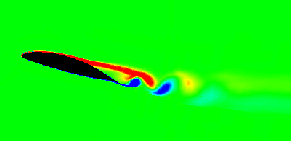
|
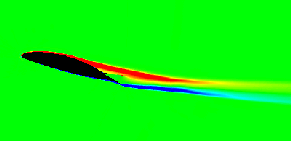
|
|
| clean airfoil |
flap angle  = 25o = 25o |
|
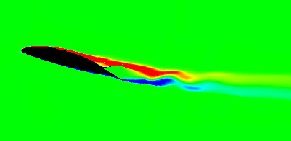
|
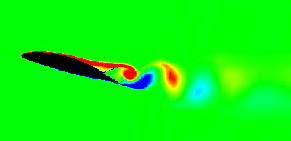
|
|
flap angle  = 40o = 40o |
flap angle  = 52o = 52o |

|

|
|
| clean airfoil |
flap angle  = 25o = 25o |
|

|

|
|
flap angle  = 40o = 40o |
flap angle  = 52o = 52o |
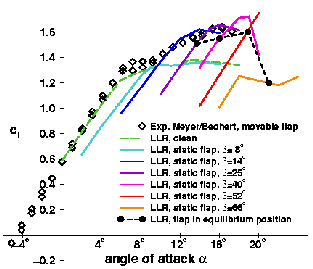
|
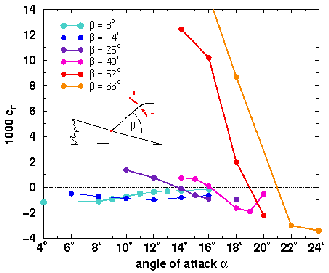
|
|
| Calculated lift coefficient for different flap angles | Calculated flap-force coefficient over angle of attack for different flap angles (CF = 0 means flap in equilibrium position) |
The Strouhal number of detaching eddies in the case of a flap in equilibrium position can be compared to the Strouhal number of the clean airfoil at different angle of attack. The self-adjusting flap, however, does not give the optimum flap angle for maximum lift. In the equilibrium position the flap angle is slighly larger than the optimum angle, resulting in a gain of about 10% lift instead of 14% in the case of the envelope polar.
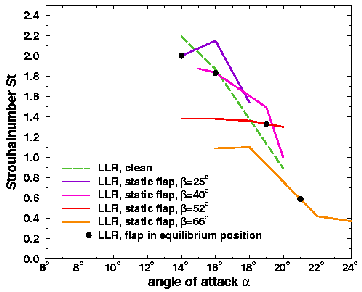

|
1 2 3 4 |

|